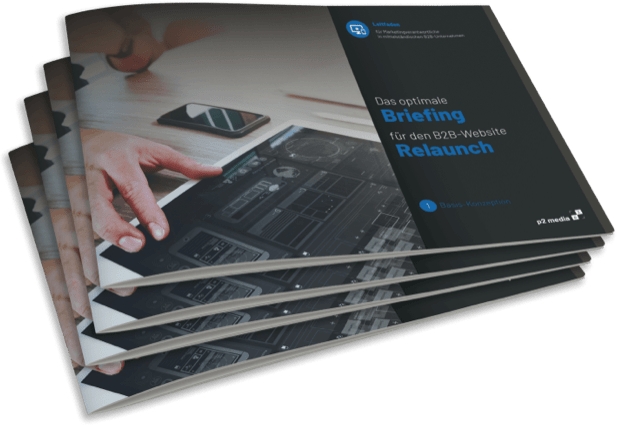TYPO3 is a powerful content management system (CMS) that allows users to create appealing and user-friendly websites. One of the most important features of TYPO3 is its multilingualism, which makes it possible to present content in different languages on a single website.
TYPO3's multilingualism is supported by its advanced features such as language files, translation management, language redirection and content elements. With these features, users can easily create a website that is available in multiple languages without having to create separate websites.
TYPO3's multilingualism offers many advantages, including:
- Expanded reach: With multilingual capabilities, companies can expand their audience and achieve a broader reach by presenting their content in different languages.
- Improved user experience: Users have the option to use the website in their preferred language, which improves user experience and increases engagement on the website.
- Better SEO: The ability to present content in different languages can help the website be found better in different countries and regions. This can have a positive impact on SEO rankings.
- Increased efficiency: by using multilingualism in TYPO3, companies can increase efficiency as they can manage and publish their content in a single website instead of having to create separate websites for each language.
- Flexibility: With multilingualism, users can adapt their website to different language and cultural areas by providing specific content for certain languages or regions.
Different approaches to TYPO3 multilingualism
Overall, there are several approaches to implementing multilingualism in TYPO3. The choice of the best method depends on the specific requirements of the website and the goals of the user.
TYPO3 primarily follows the concept of localizing the entire website:
If there is a page with headline and image in the standard language, it also exists in the translation (creating separate page trees for each language). This principle is therefore called the single tree concept, as each page with all content is translated one-to-one. Visitors can switch languages from any page without leaving the current page, which can help simplify managing content in different languages, but can also affect navigation and search engine rankings.
This is contrasted with the possibility of reserving a separate branch in the page tree and - regardless of the default language - working with an additional language. This includes textual translations, of course, but can also include additional compilations of content for a different target audience, etc. In other words, there may be a different number of pages with headings and images than in the standard language.
Here, if visitors change languages, they jump to the home page within the page branch of the chosen language. Contextually, visitors jump right along with them - an effect that can be problematic.
The multi-tree concept is therefore primarily suitable for a small number of pages that need to be translated, and possibly for special areas for selected target groups.
In everyday life, the tools provided by TYPO3 perform well. A current message or the newly created page are quickly translated. Provided that the respective texts are already available.
But what if, after the successful TYPO3 relaunch, this is to be made available completely in Dutch and English? The most obvious and also worst idea is to simply copy the texts from the browser:
- Pages and content are rather poorly structured
- Meta information and other, especially for search engines, relevant information remains unconsidered
- Data sets such as news, products or system categories are difficult to recognize as such
For the structured capture of the content to be localized, an extension such as the free Localization Manager "l10nmgr" is therefore a good choice. This ensures that all components of the website are taken into account.
Regardless of whether the translation is then done in-house or a professional translation agency is commissioned, the structured capture forms the basis for a successful localization. Especially if more than one or two languages are to be offered.
True multilingualism only with single tree
The most charming solution is therefore the single tree concept. TYPO3 provides editors with comprehensive functions for creating and maintaining additional languages (see also Introduction - Frontend Localization Guide main documentation). File meta information can be translated via the TYPO3 file management, just as many extensions take multilingualism into account.
The maintenance of the respective language is kept simple for editors. All languages can be displayed side by side or only the desired language; the localization wizard provides support for content that has not been translated. An additional information module shows the translation status of all languages.
BRUNS_digital implementation
In the case of new projects, the question of a one-time "mass translation" arises rather less: the new website has been completed and is waiting for the "initial filling" with content. As planned, the content is to be created from scratch and this is a process that takes time accordingly. To additionally burden the editorial team with translations is almost always out of the question.
For TYPO3 11.5, the alternative of an automatic translation via DeepL or Google Transl ate is therefore available. These services are integrated into the TYPO3 translation wizard and thus work in accordance with the system.
Here, too, the translation takes place on the basis of the current page, a selection of all pages is not provided. Overall, however, the process is more user-friendly and faster. Similarly, translations can be implemented gradually: The editors take just one page area, maintain it in the base language, and then translate it via DeepL. After that, the translations can go online directly. Step by step, a continuous creation or revision including translation is possible and also leads to a reduction of the workload.
Automatic translations through connection to Deepl explained in detail
DeepL is a technology company from Cologne, Germany, which specializes in the development of artificial intelligence for languages. The DeepL Translator has already been available for 5 years as a website at www.deepl.com, where it offers a free machine translation system based on neural networks that produces translations of unprecedented quality.
DeepL Pro, released in March 2018, is an extension of this platform, offering a product that provides a professional API (interface) and enhanced translation capabilities on the web. In order to realize translations of existing German content in TYPO3 in a time-saving manner, we have had good experience with the TYPO3 extension wv_deepltranslate in the course of various customer projects. After integrating the extension into your TYPO3 installation, DeepL Translate enables your editors to translate your content fully automatically directly in the TYPO3 backend. Through a direct, multi-step communication with the DeepL API, the translation takes place within a few seconds.
The translated content is created fully automatically in the TYPO3 backend as an additional page language and with all existing content elements. After a visual check and, if necessary, corrections, your editor can then release the translated content for the alternative page language with a simple click.
The effort required to manage multilingual websites and to create texts and new localizations for your website is thus significantly reduced. The TYPO3 extension requires access to the DeepL API. This is available as a DeepL developer subscription for 4.99 € per month (as of 10/2022). You pay for the translation service based on your individual usage (20,00 € per 1.000.000 translated characters). The cost of the Deepl API is not included in our offer.
With the relaunch, the existing content was migrated, precisely because the editors should not be burdened with additional content creation? Good thinking, but:
As a rule, content cannot be transferred 1 to 1 from an existing website to a relaunch. This is an often neglected but crucial point and at the same time a misconception: migrated content also requires editorial revision.
This applies all the more in the case of translation, because orphaned content etc. leads to additional work on the part of the commissioned translators, and this costs money.
This means that the same method can be used for existing content as for new content. In both cases, appropriate editorial planning is required, which, if implemented wisely, relieves the burden on all parties involved and thus ensures quality.
CONCLUSIONS:
Creating and managing multilingual websites in TYPO3 does not pose any particular challenges for the CMS. Once again, the main focus is on content maintenance and thus on well thought-out editorial planning and content preparation or post-processing. Overall, TYPO3 is an excellent choice for users who want to create a multilingual website. Its advanced features and tools make it easy to manage and present content in different languages, increasing usability and user engagement on the site.
We are happy to support you in making your online presence competitive and future-oriented:
- How does your website compare to your strongest competitors? We would be happy to conduct a free TYPO3 upgrade check for you and define a success-oriented target alignment together with you.
- In this context, we will advise you with our extensive know-how on the topics of user experience and user guidance on your website and help you to deliver an optimal experience to your customers.
- Our experienced web developers will be happy to implement your individual wishes - be it the development of extensions, responsive websites, apps orinterface connections.
- Need a new website? No problem. Together we will find the right content management system for you and start from scratch.
- Our support team is always available for technical and editorial support as well as regular training.
For a successful and comprehensive online strategy, we are also happy to advise you on the following topics:
Oliver Parrizas will be happy to answer any questions you may have on the subject. +49-800-911-91-91








